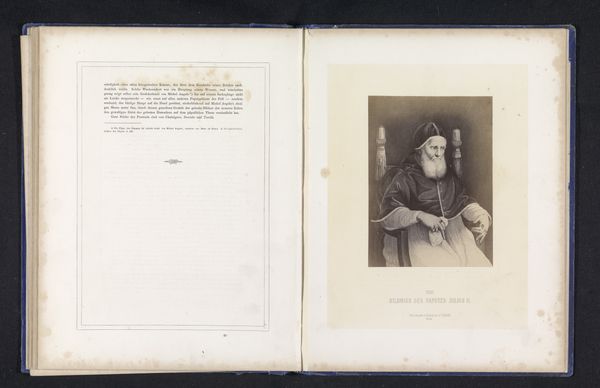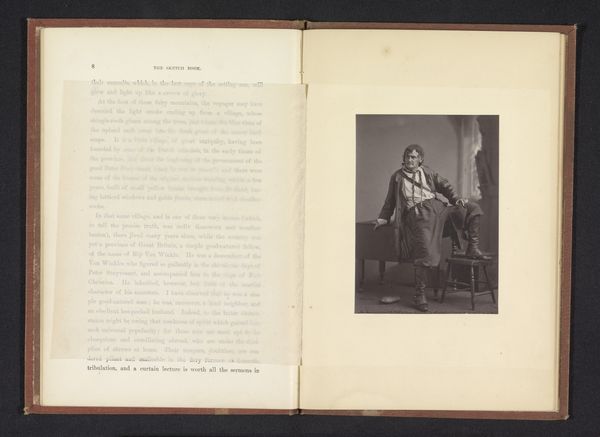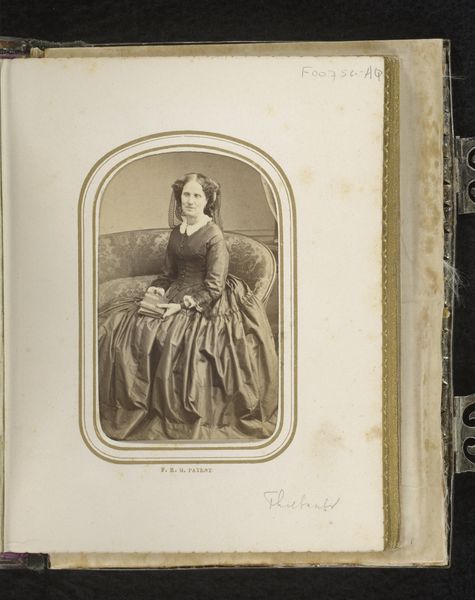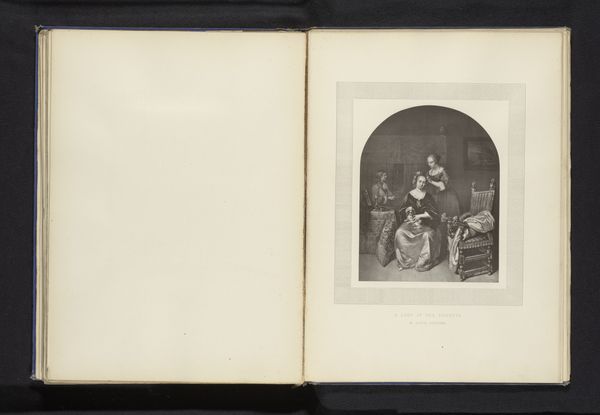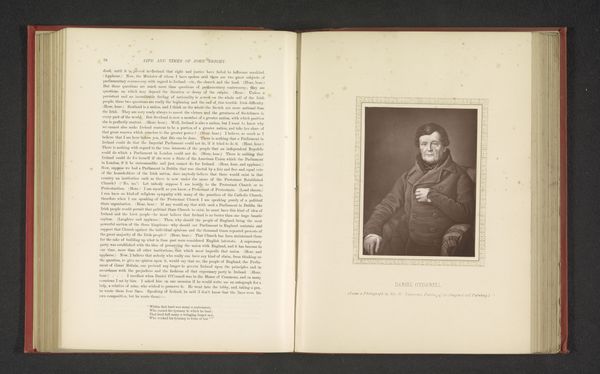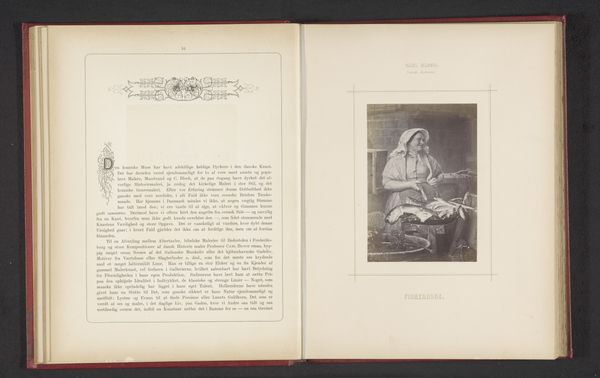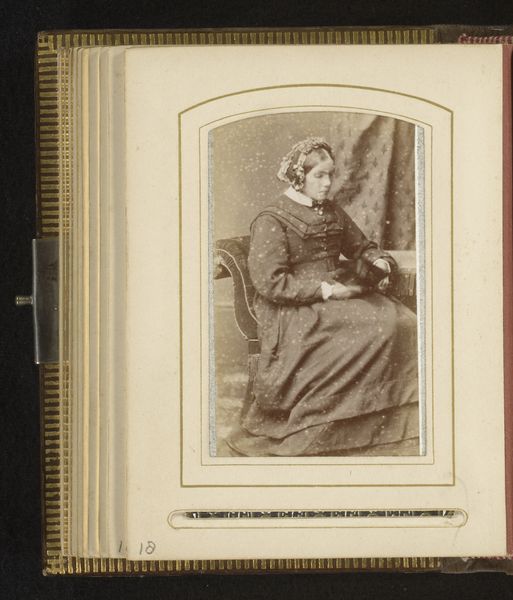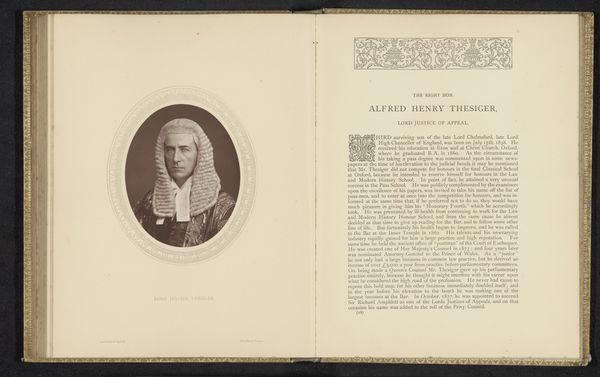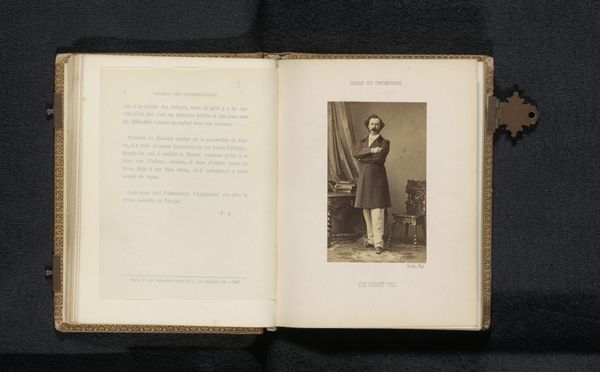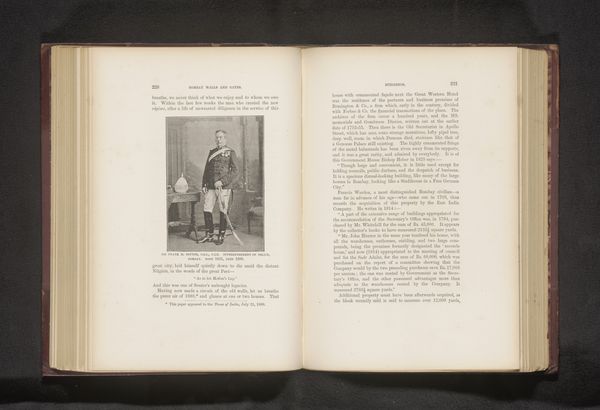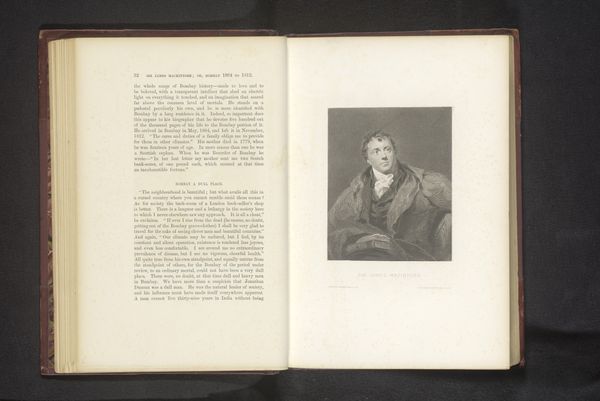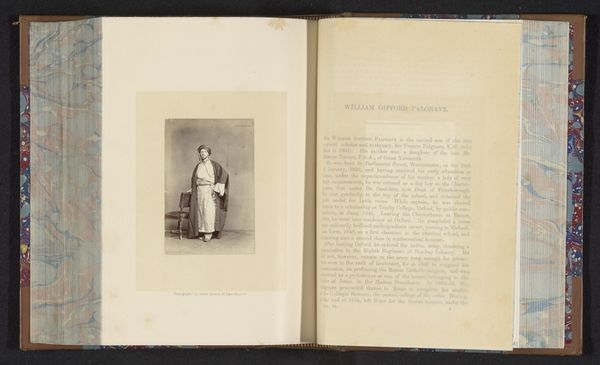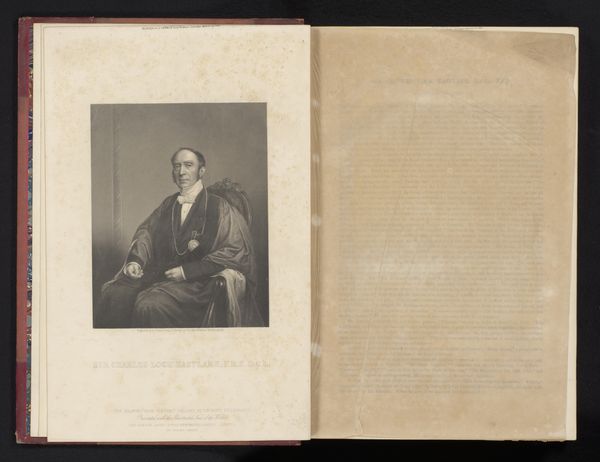
print, paper, photography, ink
#
portrait
#
paper non-digital material
# print
#
paper
#
photography
#
ink
#
paper medium
Dimensions: height 230 mm, width 183 mm
Copyright: Rijks Museum: Open Domain
Curator: Let's turn our attention to this captivating print. It's a portrait of Sophie Rostopchine, also known as the Comtesse de Ségur, made before 1878. The materials are listed as a combination of photography, ink, and paper, which is interesting. Editor: It certainly presents an intriguing mix of formality and quiet sadness. The subject's face seems weary, despite the elaborate clothing and the very posed nature of a studio shot like this. Curator: Well, portraiture, especially photographic portraiture at this time, was a social practice as much as an artistic one. This print was likely part of a larger publication, perhaps a literary journal, intended to disseminate her image and, therefore, her social standing as an author to a wider audience. What the process was and the number of prints issued reveals much about Madame de Ségur's importance. Editor: Precisely. Her literary accomplishments definitely shaped how she wanted to be perceived. Knowing the historical context is vital; her children's stories reflected very specific values and anxieties of the French aristocracy during a time of immense social upheaval. To your earlier point about materials, what kind of ink was employed to realize such a level of depth and contrast across the face? How did decisions about photographic paper affect the ultimate effect? Curator: These questions point directly to understanding labor within printmaking as well. Each stage required skilled technicians, their roles and materials all contributing to this carefully crafted presentation. Think about the paper stock as indicative of wealth, or a certain photographic process impacting mass production capabilities for printed materials and their effects on consumption. Editor: Indeed. And those decisions are inextricably linked to the politics of representation at that time. How a woman, and a writer specifically, chooses to present herself to the world reveals what image she seeks to project. She wants to control her image. Curator: Absolutely. Considering the material culture surrounding portraiture unveils power dynamics at play, providing insights into both individual expression and larger socio-economic conditions. Editor: I've found that exploring these details encourages one to really interrogate who art serves and why—broadening, rather than narrowing our perspective. Curator: For me, reflecting on how we interact with reproductions illuminates shifting material and artistic landscapes and what such mediums mean for those who worked in them.
Comments
No comments
Be the first to comment and join the conversation on the ultimate creative platform.
